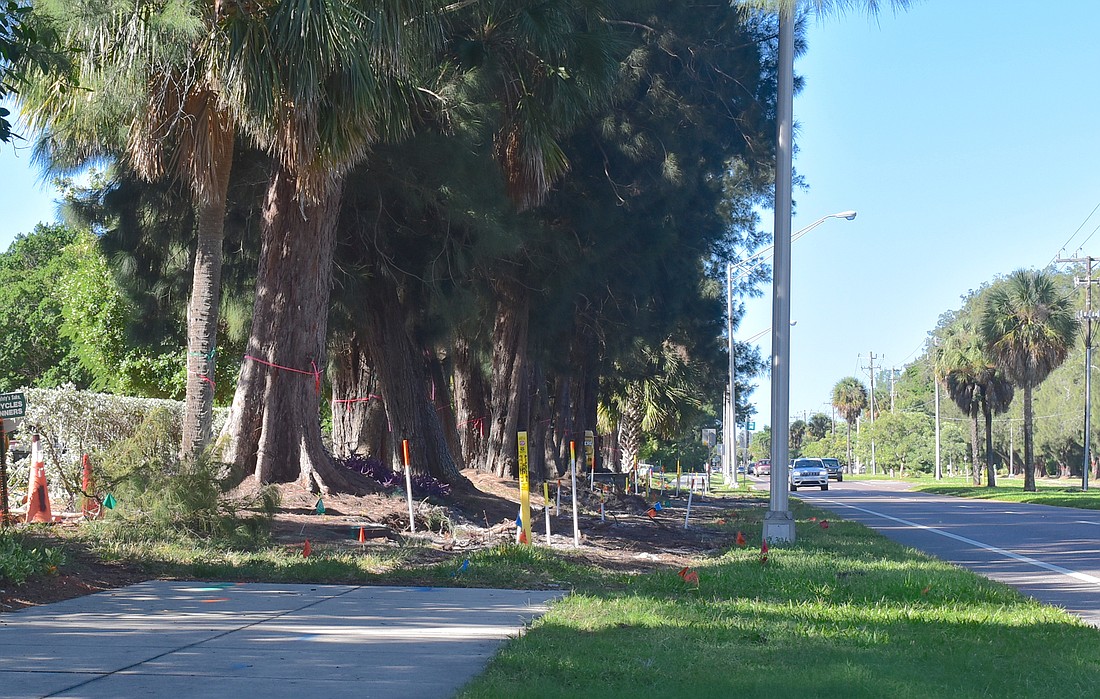- April 25, 2024
-
-
Loading

Loading

In about one year, pedestrians, cyclists and exercise enthusiasts will be able to travel down both sides of the John Ringling Causeway from downtown Sarasota to St. Armands Circle — on uninterrupted sidewalks.
For now, there is no sidewalk lining a short strip of land on the south side of Coon Key; the path is obstructed by the shallow roots of several Australian pines. This causes pedestrians and cyclists to either cross the busy road in an area with no crosswalk or tough it out over the bumpy dirt.
The Coon Key MURT (multi-use recreational trail) project will change this. Construction workers will build 10-foot-wide sidewalks from Washington Drive to Coon Key, said assistant city engineer Daniel Ohrenstein, excluding the narrow sidewalks of the Coon Key bridge, which will remain until the bridge is someday rebuilt.
The project will remove 223 non-native Australian pines and a few plants that have grown on the currently sidewalk-less part of the trail. These will be replaced with native flora. Additionally, a 16-inch asbestos-cement water pipe on the north side will be replaced and three Sarasota County Area Transit shelters will be installed. Ohrenstein said Phase I, which includes removal of trees and construction of the trail on the south side of the road, will begin in about one to two weeks following the completion of surveying work.
The Australian pines aren’t simply an obstruction; they present many other issues. Hurricane Irma in 2017 proved that the shallow-rooted trees are a safety hazard. Ohrenstein said about 16 of them were knocked over by the storm, blocking Ringling Causeway, which serves as an evacuation route.
The pines pose a problem to local vegetation as well. When their needles fall to the ground, they block ground-level plants from filling in. The trees don’t decay much and spread easily between islands.
“They’re not adapted to Florida, so there’s no fungi to control their growth,” Ohrenstein said.
In place of the removed pines, 246 trees and 1,470 shrubs will be planted. Landscape plans show the trees will include 96 cabbage palms, 38 shady lady black olives and 32 southern red cedars. The shrubs will include 406 red tip cocoplums, 267 pink muhlys, 241 coontie palms and 220 compact bougainvilleas.
These plants will be installed during the third and final phase of the projec. The second phase includes removal of Australian pines and trail construction on the north side as well as the water pipe replacement. The entire project is scheduled to take about 11 months, and no road closures are anticipated during the project.